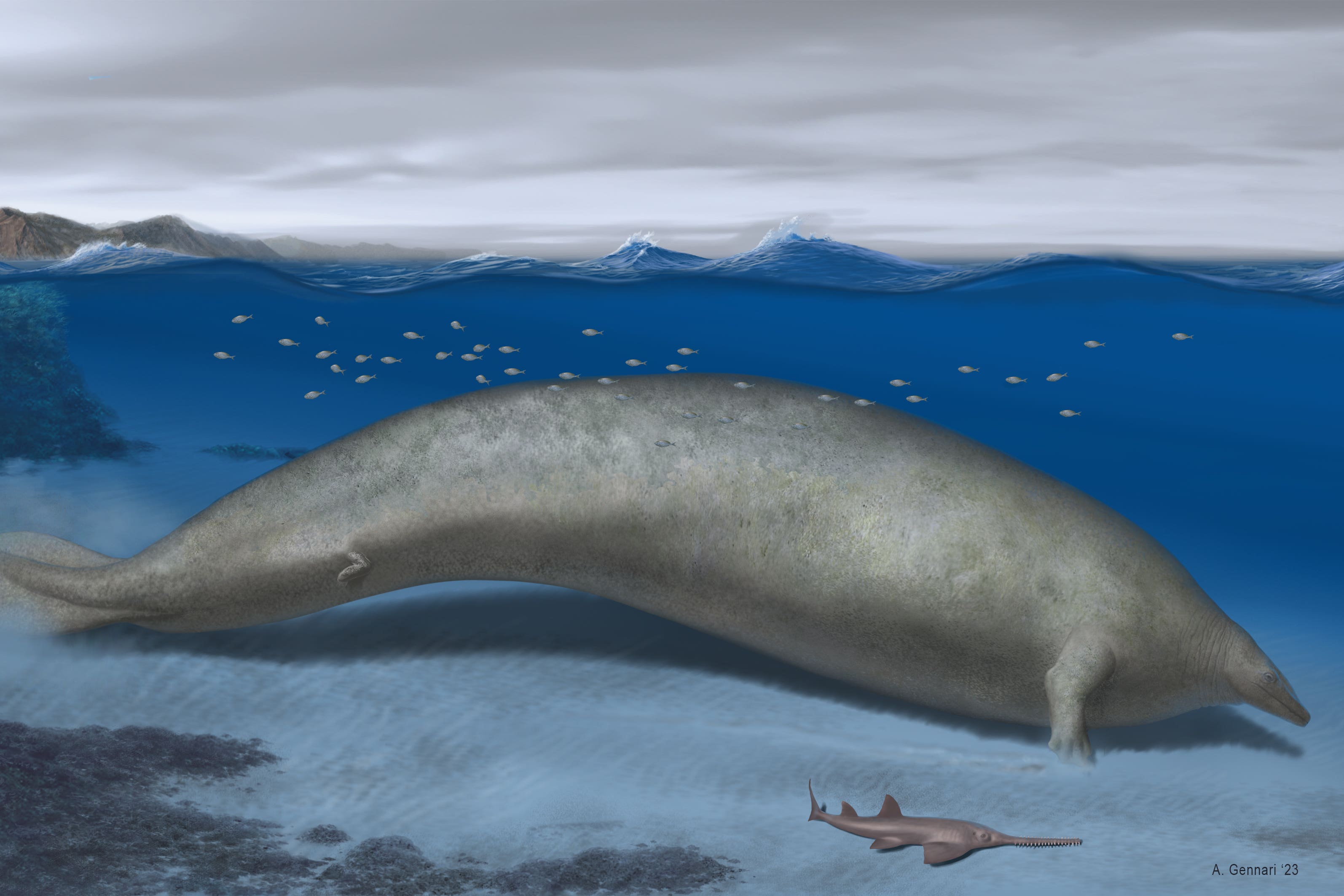39 million-year-old extinct whale ‘may be heaviest animal that ever lived’
Researchers analysed the remains of a partial skeleton that was uncovered 13 years ago in the Ica desert on the southern coast of Peru.

The heaviest animal that ever lived may be an ancient whale species which swam in the oceans around 39 million years ago, scientists believe.
Researchers analysed the remains of a partial skeleton – featuring 13 vertebrae, four ribs and one hip bone – that was uncovered 13 years ago in the Ica desert on the southern coast of Peru.
Their findings, published in the journal Nature, suggest this ancient whale had a body mass between 85 and 340 tonnes, making it up to three times heavier than a blue whale, which was previously thought to be the heaviest animal ever to exist.
Scientists have named the species Perucetus colossus – a nod to its huge body mass and the place where it was discovered.
Dr Eli Amson, a researcher at the State Museum of Natural History Stuttgart in Germany, told the PA news agency: “P. colossus might be the heaviest animal known to date.
“In any case, it was at least as heavy as the blue whale.
“But the P. colossus we describe was not longer than the largest blue whales.
“We estimate the new species’ specimen to have been 17m-20m (56ft-66ft) long, while blue whales can reach 30m (98ft).”
P. colossus belongs to a family of extinct cetaceans – a class of mammals which include dolphins, whales and porpoises – known as basilosaurids.
Basilosaurids lived from the middle Eocene to the late Oligocene epoch, about 41 million to 23 million years ago.
The remains were first discovered by palaeontologist Mario Urbina, a researcher at the National University of San Marcos in Lima.
The specimen was transported to the Natural History Museum in Lima, where they found that the vertebra weighed well over 100kg (220lb) and the ribs reached a length of 1.4m (4ft 7in).
A reconstruction of the P. colossus suggests it is two to three times heavier than the 25m (82ft) long blue whale skeleton on show at the Natural History Museum in London.
The researchers said fossil records of cetaceans are important because they help document the evolutionary history of mammals at a time when some land-based animals were returning to the ocean.
It is thought that, during this transition to aquatic life, a trend towards gigantism began in marine mammals.
However, Dr Amson said findings now suggest this gigantism may have begun much earlier than believed.
He told PA: “The most important implication for the discovery of P. colossus concerns the evolution of cetaceans, and more generally that of extreme gigantism.
“So far, extreme gigantism in cetaceans, as seen in the baleen whales, has been regarded as a relatively recent event – around five to 10 million years ago.
“Thanks to P. colossus, we now know that gigantic body masses have been reached 30 million years before previously assumed, and in a coastal environment.”
To reconstruct the body mass of P. colossus, the scientists used the ratio of soft tissue to skeleton mass known in living marine mammals.
The team said the tremendous bone mass of P. colossus is caused by two types of modifications of the skeleton: the first is the addition of extra bone on the outer surface of the skeletal elements, while the second is the filling of inner cavities with compact bone.
This extra weight helps these animals regulate their buoyancy and trim underwater, the authors said.
The researchers speculate that P. colossus may have been a slow swimmer and lived near the coast.
The Natural History Museum in Lima has organised a temporary exhibition of P. colossus to coincide with the publication of the research.
Bookmark popover
Removed from bookmarks